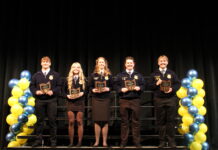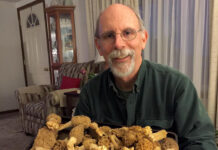The founding fathers got it right. But I’m not talking about Madison, Hamilton or Jefferson, I’m talking about Smith, Lever, Hatch and Morrill.
they may not be household names to you, but if you’ve benefited from a land-grant university system (education available to all social classes), or an agricultural research station, or an extension outreach program, you’ve benefited from these ‘other’ founding fathers’ work.
Today, however, these systems suffer the same problem as farmers themselves: They don’t do a very good job of tooting their own horns. And now, it’s getting harder and harder to convince local, state and federal policymakers that funding is critical.
The federal agricultural research funding debate is bringing the situation to the forefront. When resources are tight, who sets the research agenda? How does the U.S. set priorities for funding basic and applied science? And do you fund through competitive grants or by splitting the pie into portions?
The federal system for funding agricultural research is complicated, but has been shifting from a “formula” system that allots portions of the funding pie to the land-grant universities, to a competitive system that lets all scientists grab as many pieces of the pie as they can.
It’s about return on investment, says Steve Slack, director of the Ohio Agricultural Research and Development Center.
“If you want someone to invest, you need to make a case that you’re having an impact,” Slack said.
And those now-shunned formula, or base, funds have created infrastructure and put the people in place, and basically set the stage for being able to grab some of those competitive dollars.
“We think we have good scientists, we think we compete well, but you have to have the infrastructure there to be able to do that competing,” Slack added.
Slack also worries about chasing competitive grants to the detriment of local and state issues that aren’t national priorities. And about grants that don’t include the extension, or outreach, component. You won’t have that supported in a totally competitive system.
Ohio, for example, has a huge ‘green’ industry, and state and local research and teaching supports turf and landscape production and management. Slack has yet to see a competitive grant in that area.
Without formula funds, he adds, we wouldn’t have been able to mobilize a soybean rust monitoring system or had Anne Dorrance in place to lead the charge. Dorrance, a, OARDC soybean researcher who also holds an extension appointment, just received the USDA’s highest honor acknowledging contributions to agriculture for her work in soybean rust detection and management.
The same is true in the emerald ash borer arena, where OARDC entomologist Dan Herms is now a leading researcher on that devastating pest.
A competitive grant system, Slack said, creates a “one-way dialogue of what we’re going to invest in.” And that won’t include issues of state or regional importance.
It’s simple, he adds. We need both components: base or formula funds, and competitive dollars.
“The infrastructure makes sure you have the people and programs in place to respond to state and regional needs on an ongoing basis. The competitive programs allow us to focus efforts on national priorities as they evolve, and by utilizing the infrastructure that’s there, you can get people to target their efforts on those priorities.”
This is a critical investment decision and one whose impact will be felt well beyond the research lab. You’ll feel it in your homes, your businesses and on your farms.
(Farm and Dairy Editor Susan Crowell can be reached at 800-837-3419 or at editor@farmanddairy.com.)
Get 4 Weeks of Farm and Dairy Home Delivered












